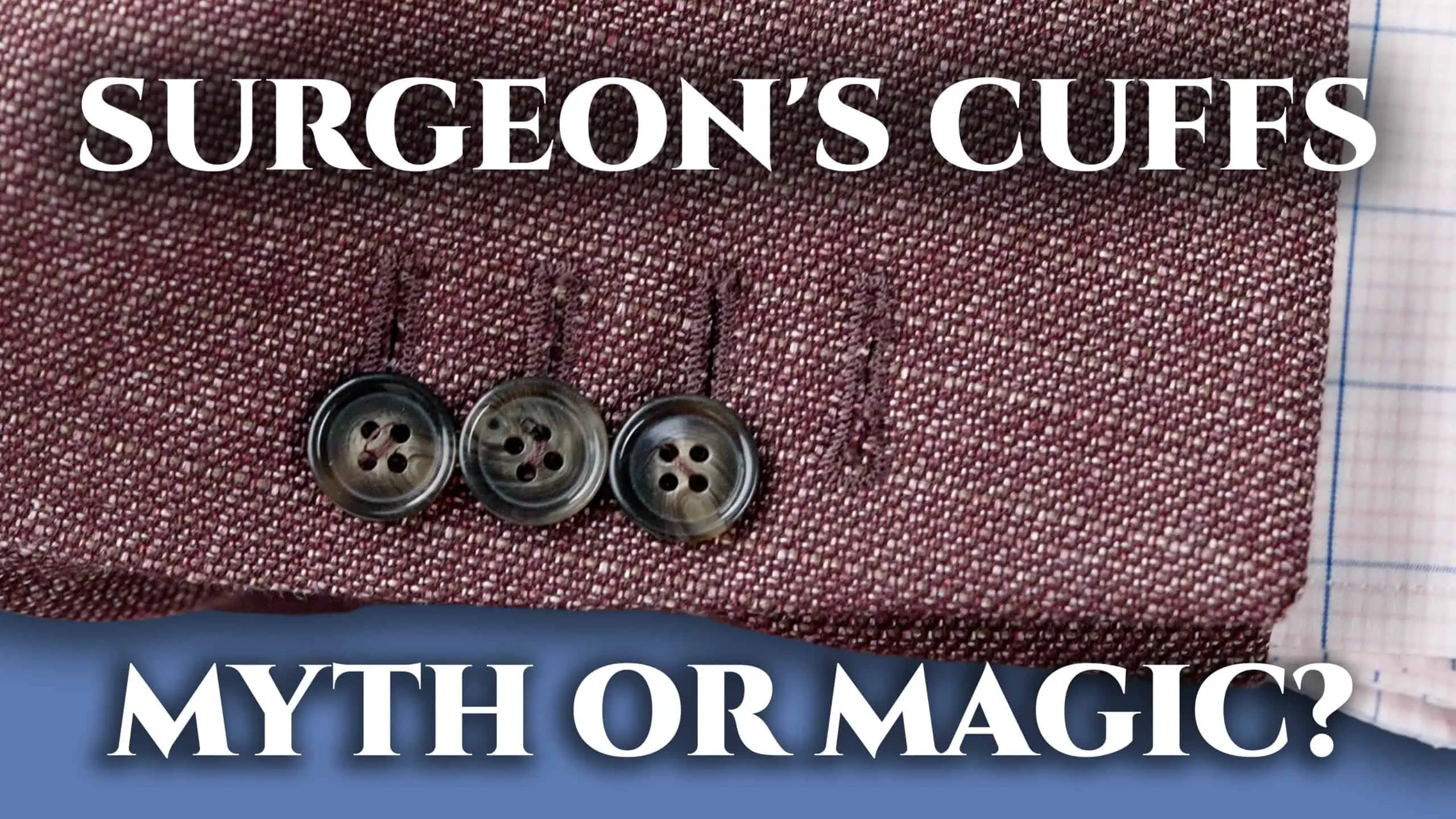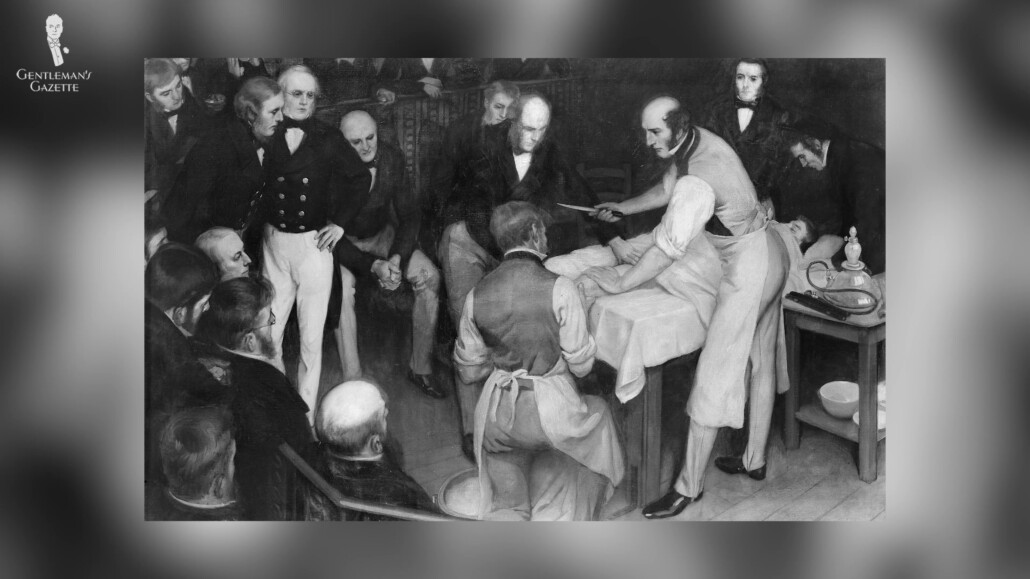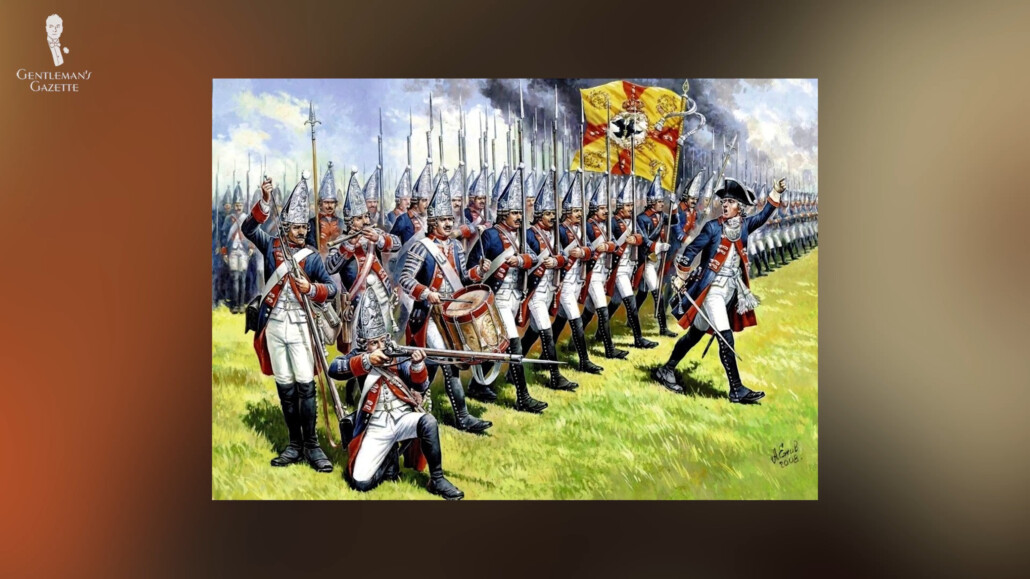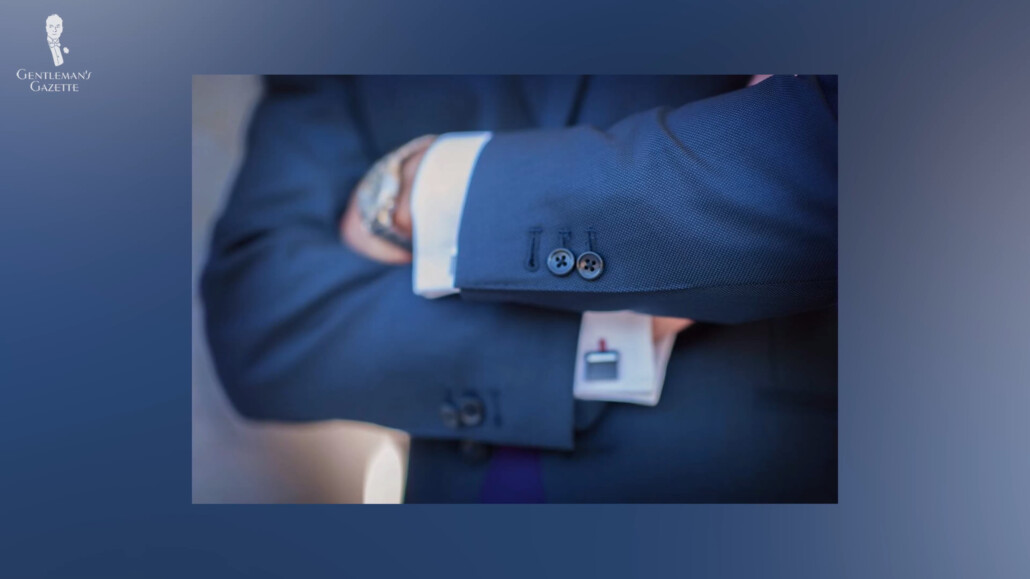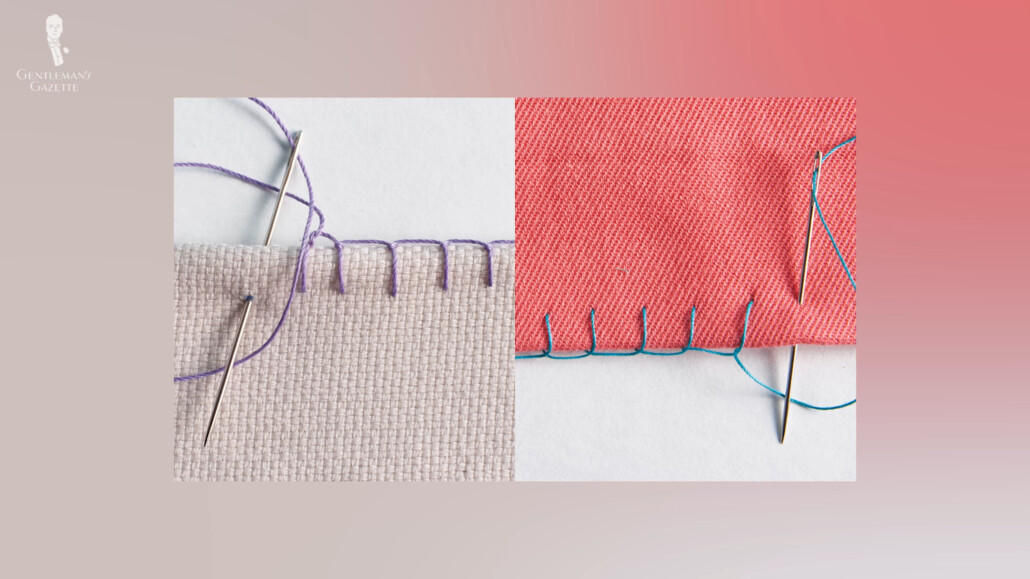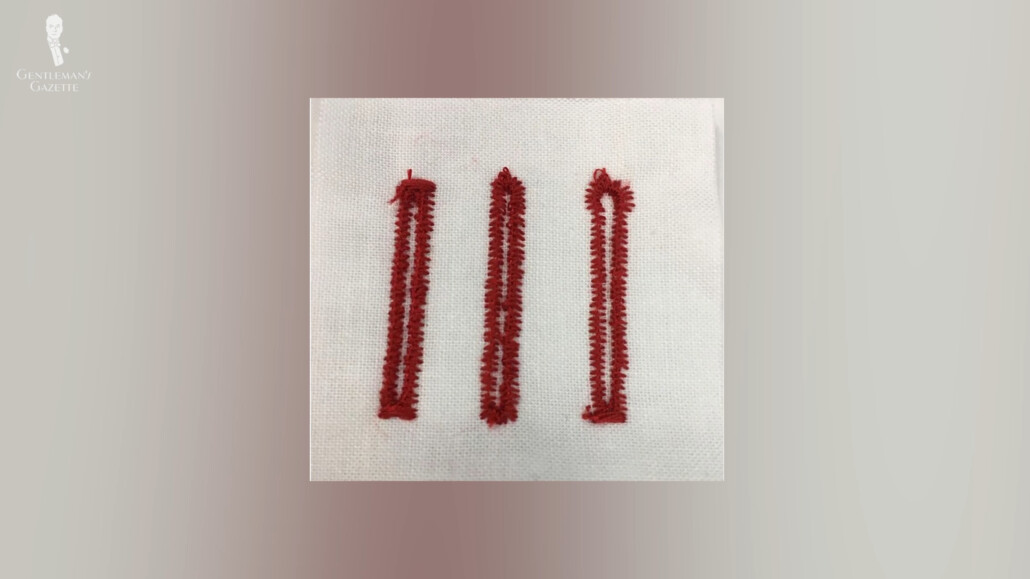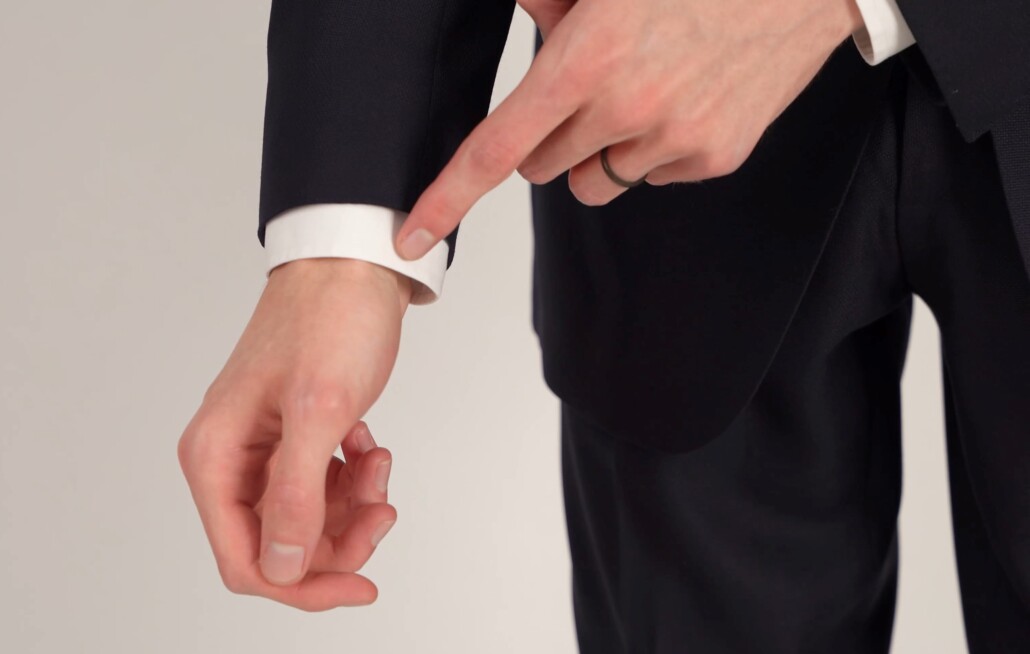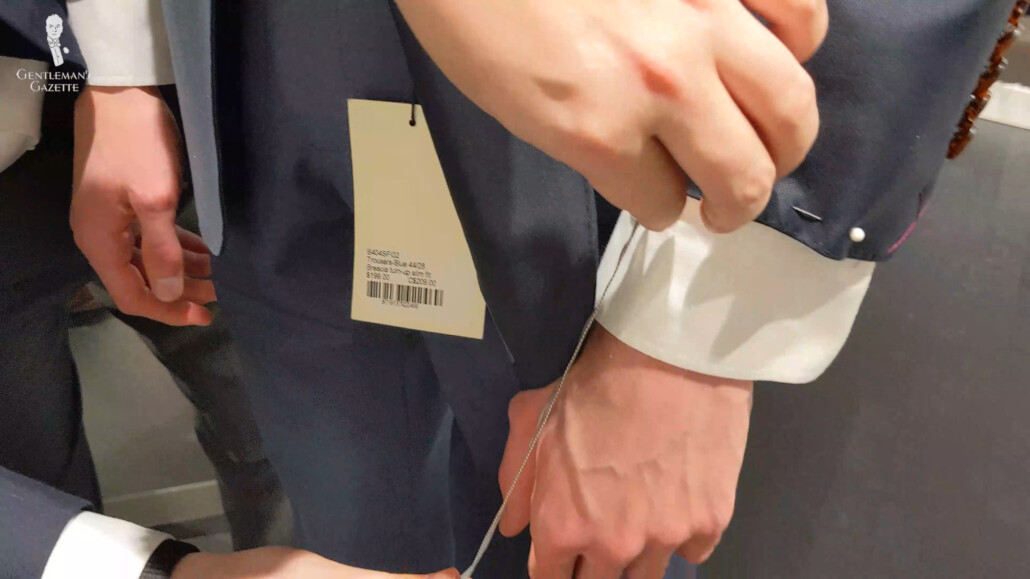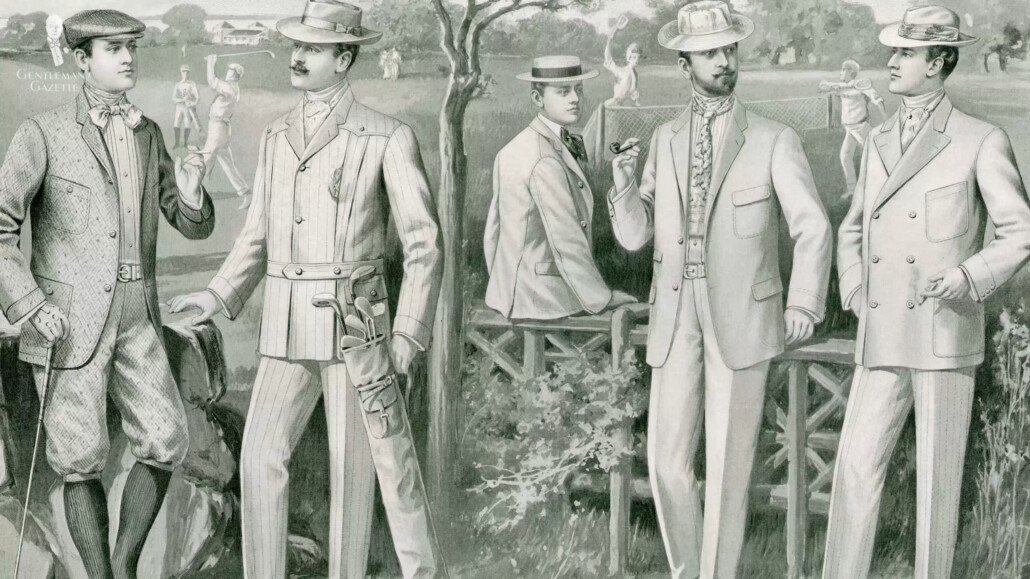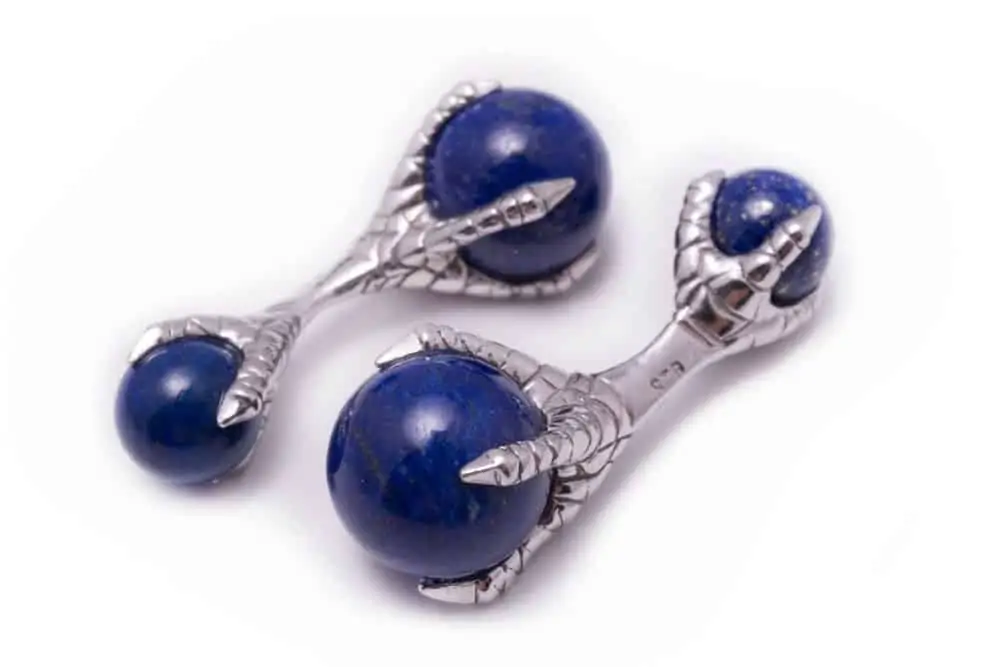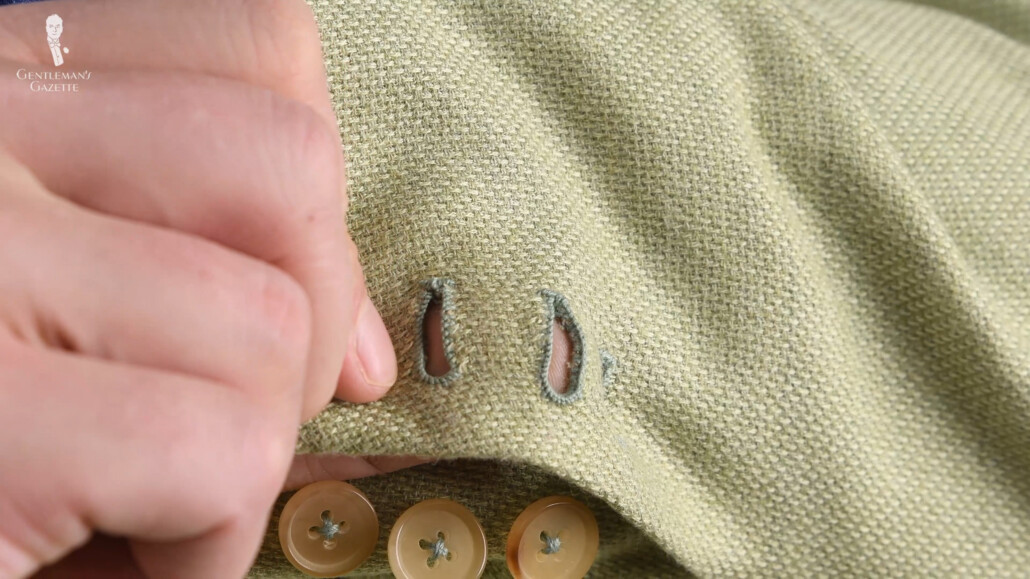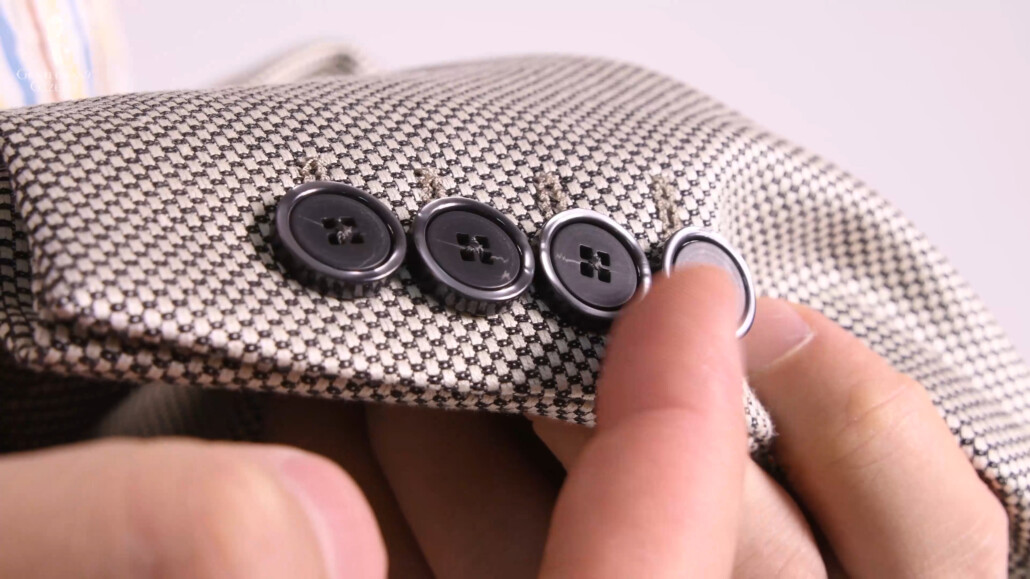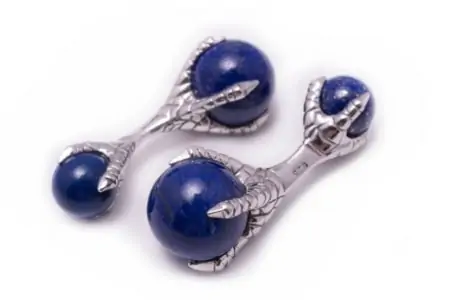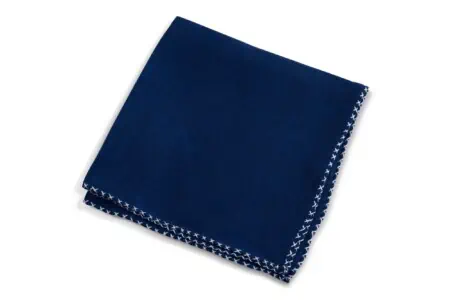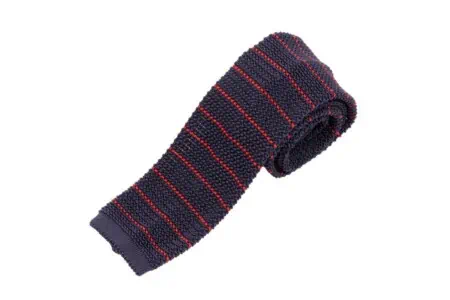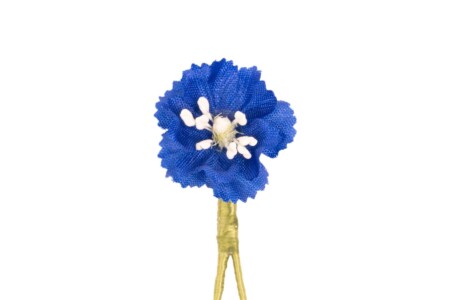Among the buzzwords in the world of classic menswear is “surgeon’s cuffs,” and while doctors would likely understand immediately, many aren’t sure what it is, and may (or may not) be missing out on this jacket feature! So, let’s define surgeon’s cuffs, and debunk whether they live up to the hype today!
As you can imagine, a surgeon’s cuffs can get pretty messy in the operating theater, especially in the days before health and safety as a concern. I’m pretty sure that guy is using a steak knife for this operation. And although we started with a bit of a joke here, this will actually relate to the main point today.
The surgeon in the picture below isn’t wearing a jacket, but he does have his sleeves rolled up. This is something that’s easy to do with a shirt, of course, but can the same be said with a jacket? Well, if you take a look at your own jacket sleeve, it’s likely that you’re going to find a row of buttons down the cuff and these are most often going to be accompanied by buttonhole stitching.
Most often, these buttons are going to be purely decorative. But, in some cases, they will actually function. This is what’s referred to as a “surgeon’s cuff,” which is to say a jacket cuff that has working buttons. So, are they just myth or truly magic?
History of Surgeon’s Cuffs
First off here, there are a number of misconceptions about just how cuff buttons came to be. Some believe that buttons like these were originally added to British Navy uniforms by Lord Nelson to stop the lower members of the ranks from wiping their noses on their sleeves.
In this painting, though, we can see Nelson at the age of 18 wearing a uniform that was introduced in the year 1767 with the orientation of the cuff buttons already in place. 1767, by the way, was nine years before this painting was made and we’d say it’s highly unlikely that a 9-year old would be the source of a new button orientation on jackets.
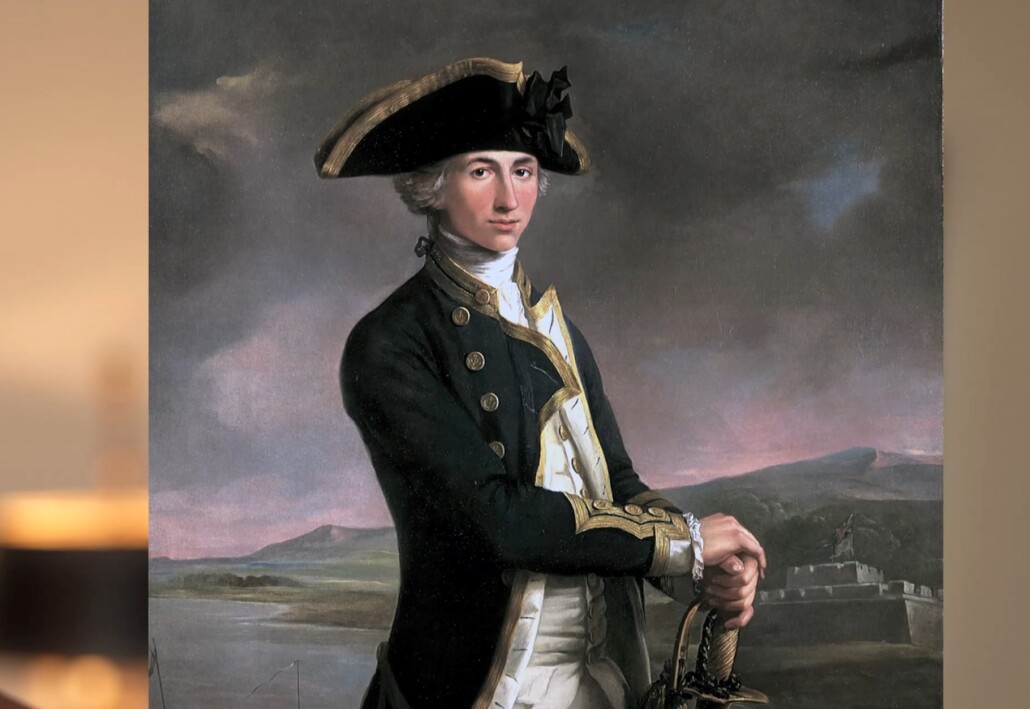
Furthermore, even though Nelson’s high military rank means that he would have worn a uniform such as this, lower-ranking enlisted men wouldn’t have. A similar story has to do with Frederick the Great of Prussia, who was said to be disappointed when inspecting his men who had filthy sleeves.
He was told that his men were wiping their sweaty faces on their sleeves, and thus, metal buttons were added to the ends that would scratch up their faces and, therefore, deter them from doing so. Other versions of this same story exist, too, tracing their way back to figures like Napoleon.
However, these are all just old wives’ tales and, in fact, they are sometimes attributed also incorrectly to being the origin point of French cuffs on shirts. Instead of spending any more time on these old wives’ tales then, let’s look at the proper history cuffs and buttons on jacket sleeves, starting in the 17th century.
17th Century
Firstly, consider this style of overcoat, which dates to the 1650s. It’s got an excessive amount of buttons running down the length of the sleeve so that the arm could move freely when unbuttoned or be buttoned inside of the sleeve and the coat for added warmth. Also, the cuff of the sleeve, which is wide and open, hangs a good deal lower than the end of the arm.
This would eventually inform the basis of the 17th-century frock coat, and you can see a model from the 1660s here. The overall shape of the coat and the sleeve have slimmed down and become more fitted. And, instead of being quite long, the cuffs are now rolled or folded over and, most importantly, buttoned to the rest of the sleeve.
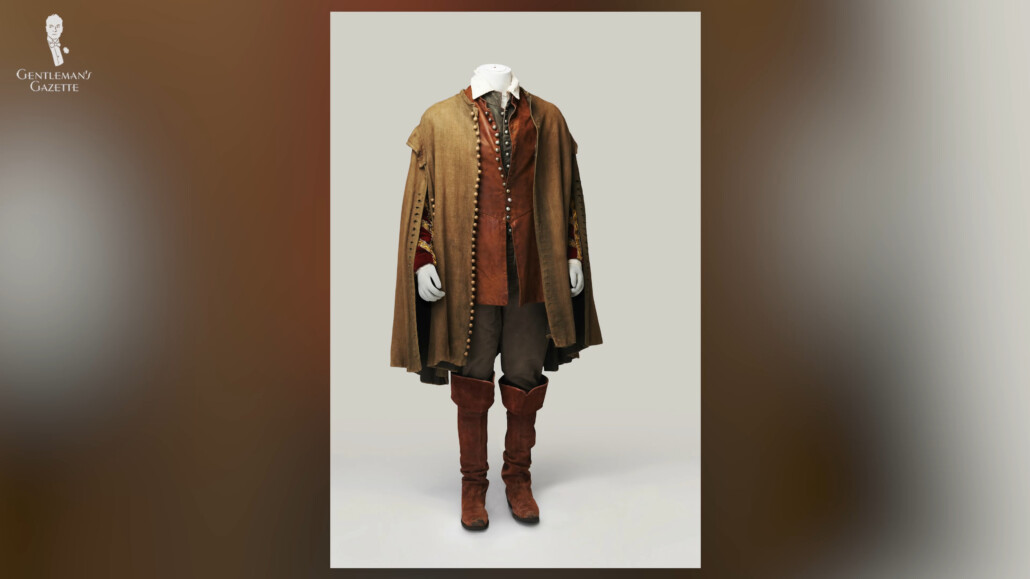
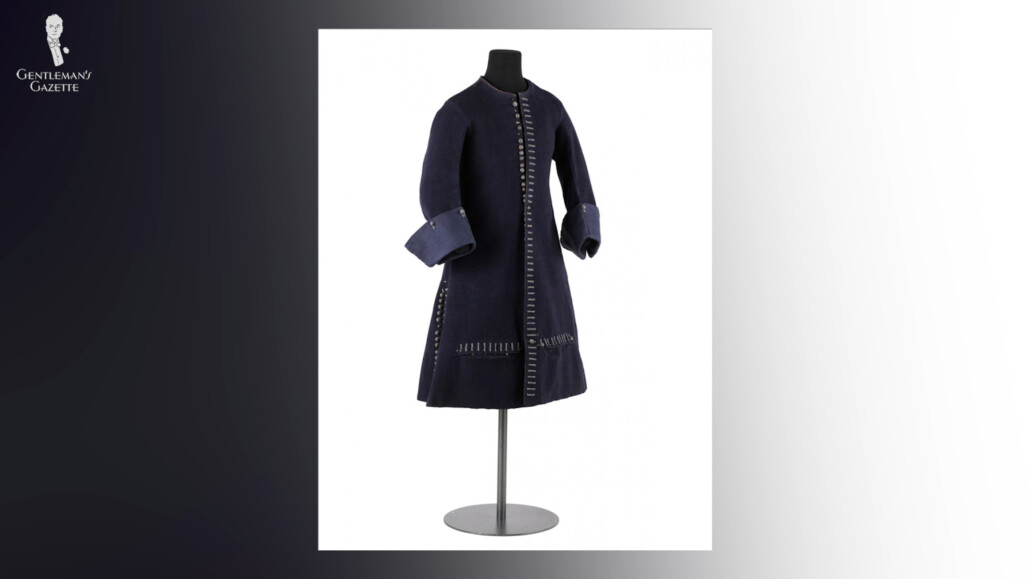
The main coat fastening has a truly staggering number of 46 buttons. But, the cuffs simply have three holding them in place to the sleeve.
1670s
By the 1670s, the cuffs would begin being sewn onto the sleeves as separate pieces with buttons being purely decorative. Reflecting the fashions at the time, military uniforms would start to incorporate these styles and, as the history of military uniforms is more well-documented, it’s easier to trace the evolution of cuffs and buttons from here.
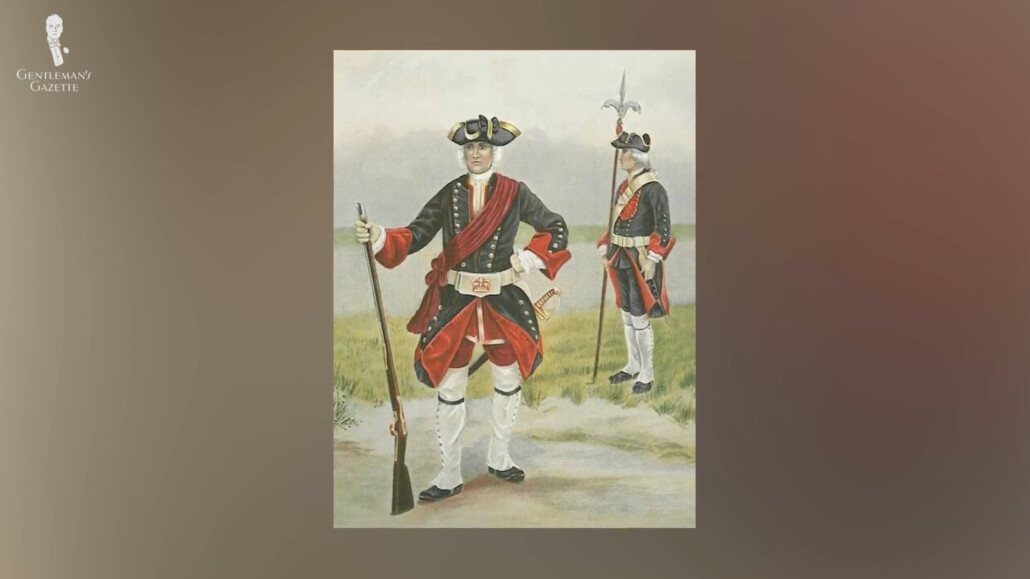
18th Century
Turn-back cuffs, as seen on 18th-century jackets, are famous for featuring multiple, highly-decorative buttons. Sleeves, overall, would begin to slim down around this time. This is especially clear in British military uniforms, where we can see the transition from turn-back cuffs with horizontal rows of buttons into cuffs that open down the wrist with vertical buttons.
Not many examples of these garments have survived to showcase their working cuff buttons today. But, it is safe to say that these styles were practical, allowing for buttoning and unbuttoning and more movement overall.
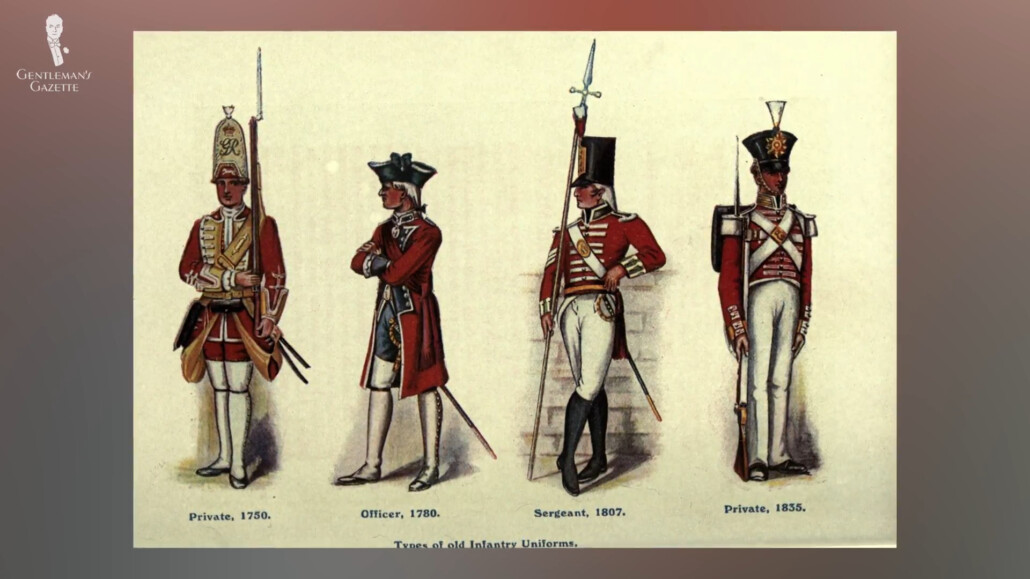
By the end of the 18th century, formal suits continued to have slimmed-down, turn-back cuffs with decorative buttons. Jackets sleeves have slimmed down further around the wrist by the beginning of the 19th century and were starting to feature fewer buttons overall.
Buttons on more expensive garments through the 19th century could be functional, but many continued just to be decorative. Some still had turn-back cuffs, but many were smaller and some were simply sewn on. Indeed, sewn-on cuffs or even just stitches to emulate cuffs would persist all the way through the end of the Edwardian Era.
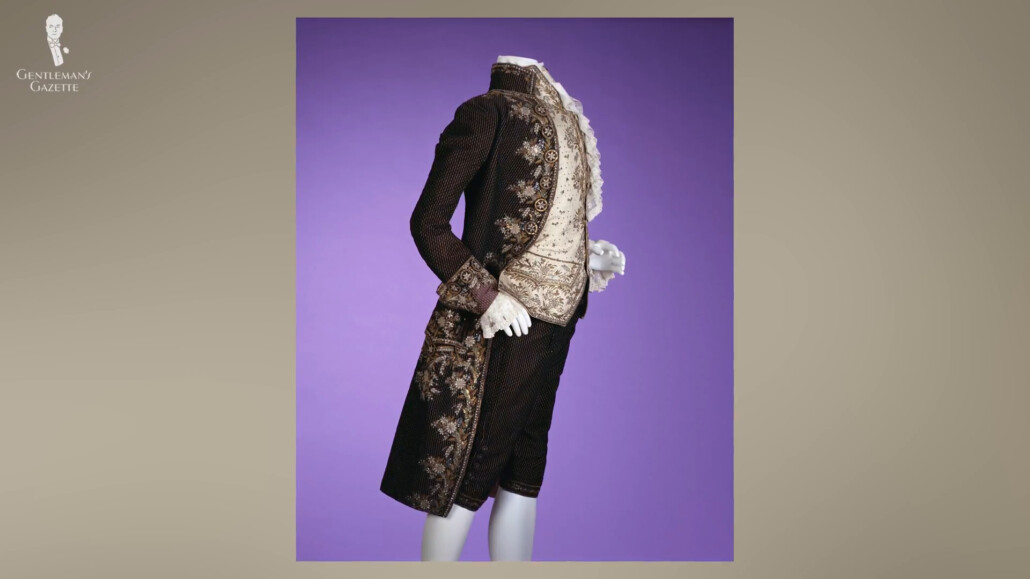
By this time, vertical rows of buttons were the standard and this is also when we hear the term “surgeon’s cuff” begin to be used. As with much of the menswear lexicon, it’s believed that this term originated on Savile Row.
In the late 18th century, tailors began arriving in the area and quickly began making suits for the wealthy locals. Many of these wealthy individuals would have required formal clothing and, thus, there were more decorative aspects, such as buttons, that were not functional.
19th Century
In the 19th century, of course, respectable men were never seen without a jacket and this extended to surgeons, who would go out into the field fully suited and booted to tend to injured men. Because of this, their sleeves and cuffs were often filthy. But, it was impractical to simply shove the sleeve of one jacket up the arm as it was uncomfortable and the sleeve could also easily fall back down.
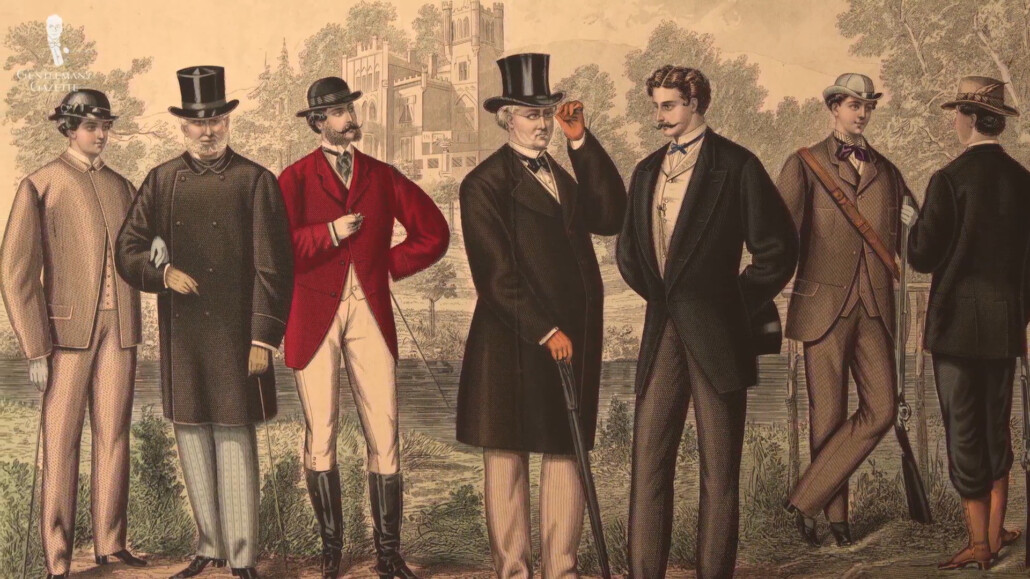
In the late 19th century on Savile Row, then, it was these doctors and surgeons who began requesting that the buttons on their jacket sleeves would be functional for more movement. Thus, jackets with working buttons on the cuffs are today most commonly referred to as “surgeon’s cuffs.”
What’s The Hype Around Surgeon’s Cuffs?
Because of their historical association with the world’s most famous tailoring street, surgeon’s cuffs are often touted as a feature only the highest quality suits. To show this off, many men will leave one of their cuff buttons undone to show that they are indeed functional. This supposedly sends a clear message to others that the man in question not only appreciates but can afford quality.
So, with working cuff buttons being so closely associated with quality and wealth, many other tailors and suit manufacturers, even those not on Savile Row, have started including functioning buttons on their jacket sleeves.
We can use Tom Ford as an example here, as not only is a working cuff present on all of Tom Ford’s jackets. But, indeed, the buttonhole closest to the sleeve is deliberately made larger than all of the other buttonholes. Tom Ford’s suits are famously pricy, of course, but they are still finished as ready-to-wear suits.
Indeed, many other high-end tailoring houses also produce ready-to-wear options with surgeon’s cuffs. Some Savile Row tailors like Huntsman and Richard Anderson also include surgeon’s cuffs on their ready-to-wear offerings.
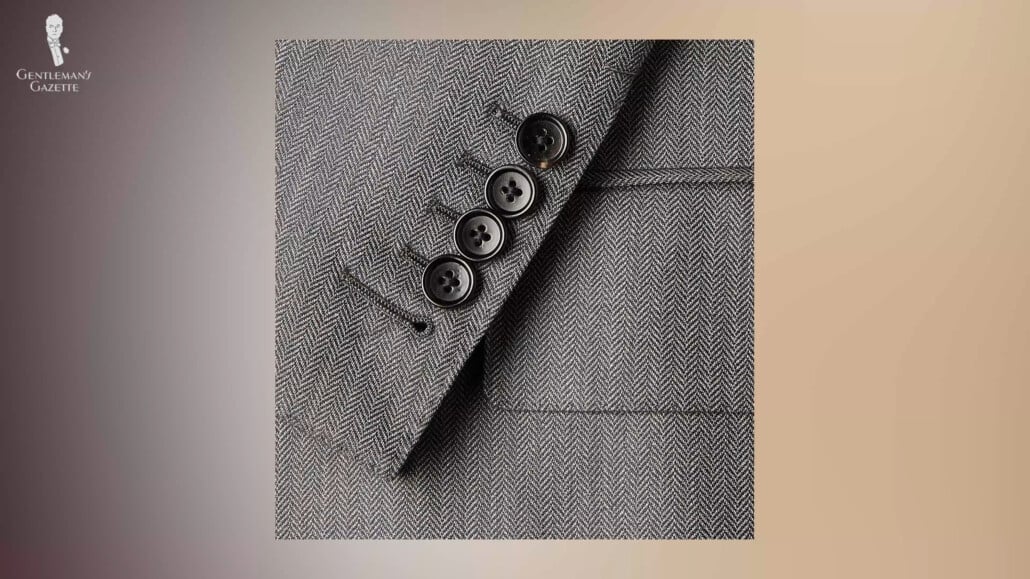
It is true that surgeon’s cuffs used to be exclusively from high-end tailors due to the amount of time that goes into making a high-quality functioning buttonhole. Sewing a buttonhole is, in fact, a very difficult and time-consuming skill to learn. They’re sewn by hand with a buttonhole stitch, which is, essentially, the same as a blanket stitch but much smaller and with a higher density.
An alternative method is known as the “tailor’s buttonhole stitch,” which is largely the same, but has knots running along the edge. The point of these stitches is to prevent the edge of the cloth from fraying over time as the button is repeatedly put through it. The buttonhole is traditionally cut first and then, stitched for a neat and tidy finish.
As technology has improved over time, however, sewing machines are now able to execute buttonhole stitches and, because of this, stitching is often done first, and then, the cut is done second. Such innovation means that clothing can now be produced much more quickly and at greater volumes. But, as you might expect, stitching and then, cutting leads to a sloppier finish often than not.
Of course, if we look at surgeons themselves, there’s been an increase in sanitation practices over the centuries and, indeed, many surgeons aren’t wearing traditional jacket styles when operating at all.
So, the practical need for a surgeon’s cuff has greatly been reduced. But, with the advent of this sew-first-cut-second approach and increased awareness of the historical association between surgeon’s cuffs and high-quality, many lower and ready-to-wear suit brands are also starting to incorporate working buttonholes in their jackets.
What’s the Issue with Cheap Surgeon’s Cuffs?
Well, first of all, and as we’ve pointed out in our video on what an alterations tailor can and can’t do, which you can find here, working buttonholes on a jacket sleeve can present quite the problem when you need to get a sleeve altered. Once buttonholes are cut, that’s where they’re always going to be in the fabric, of course.
So, if you need to get your sleeve shortened or lengthened, this will have to be done from the shoulder of the jacket, which is much more difficult and time-consuming. Meanwhile, if the buttons are purely decorative, they can be simply be removed and the sleeve length can be altered from the bottom. And then, the buttons can be sewn back on.
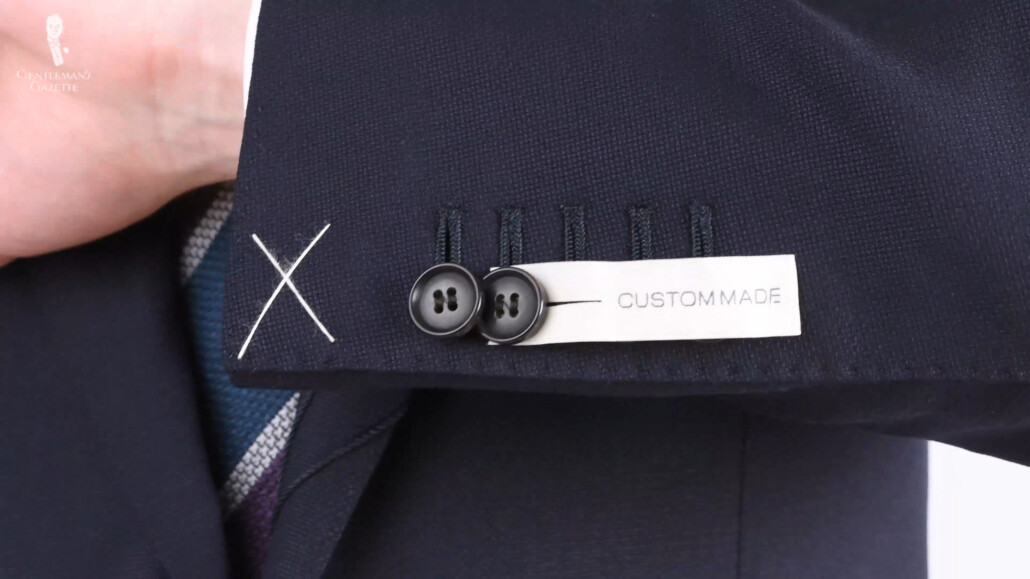
With a ready-to-wear garment, of course, there is a higher probability that its exact measurements aren’t going to correspond perfectly to the measurements of your own unique body. If you were having a garment made bespoke, of course, it would be made to fit you from the beginning.
So, the sleeve wouldn’t need to be altered and you wouldn’t have to worry about including a feature like surgeon’s cuffs.
Over the last decade, SuitSupply has had issues with this in particular as many of their jackets came with sleeves that were too short overall for the average man. However, when these men needed their sleeves lengthened, the jackets already had working cuff buttons. So, the overall results could often be quite imbalanced.
Speaking of SuitSupply and sleeve length, we take a deeper dive into them in our SuitSupply review. And, as we eluded to before, there is less and less of a practical application for surgeon’s cuffs these days.
Not only in terms of doctors having better sanitation practices, but also, simply because of the overall casualization of society. Unlike previous centuries, which were governed by strict rules of etiquette, it’s now socially acceptable for a man to simply take his jacket off if he needs to. And, because of the increase in central heating, you’re probably not going to wear a jacket at all times indoors anyway.
In other words, if you find yourself in a situation where you’d want to roll up your jacket sleeves, it would probably be easier to take the jacket off entirely. Meanwhile, shirts are typically less expensive and easier to launder and replace. So, if you’re in a situation where you need to get your hands dirty, save your jacket and sacrifice your shirt.
Furthermore, even if you wanted to roll up your jacket sleeves and had the ability to, it wouldn’t necessarily be a quick task as you’re typically going to have to deal with eight sleeve buttons in total. That’s before we even get to your shirts’ buttons or cufflinks for that matter. There are also risks of uncomfortable bunching when you roll your jacket sleeves up and an overall sloppy appearance.
We’re not trying to universally bash the idea of surgeon’s cuffs here as they can be positively found in the feature. They can be a great addition to lighter summer suits and jackets to improve airflow where having the buttons undone can encourage a breeze to go up the sleeve, which is certainly a nice feeling in hot weather.
Having a working cuff can also be a great way to experiment with adding a bit of sprezzatura to your look as having a rakishly undone cuff button or two is one of the cornerstones of relaxed elegance. And if you decide it’s not for you, of course, you can simply rebutton your sleeves.
And, although they may no longer be a signifier of quality from a distance, up close, a handsewn buttonhole and a working surgeon’s cuff is a beautiful element of handmade clothing and something to quietly enjoy and share with others who appreciate the craft of tailoring.
Are Surgeon’s Cuffs Myth or Magic?
Now that we’ve looked at the history of surgeon’s cuffs and their place in menswear today, it’s time to decide whether the quality afforded to you by this feature is mythical or truly magical. It can certainly be a magical experience to have working cuff buttons on your suit jacket, especially when their handsewn as we’ve just mentioned.
You’ll have the option to leave your jacket sleeves buttoned or unbuttoned to give you different looks. And there’s no denying that, for the menswear nerds among us, surgeon’s cuffs do have a deep and interesting history.
On balance though, it’s certainly true that today, a surgeon’s cuff cannot by itself be a true signifier of quality in a suit and, therefore, we’re falling more on the side of myth here. With so many manufacturers now being able to offer working cuffs buttons on their jackets at so many different price points, simply having them is no longer a surefire sign of quality.
You’re just as likely today to find a surgeon’s cuff on a bespoke jacket from a Savile Row tailor as you are to find one on a mass-market jacket from a low-price, budget retailer like H&M. By the way though, if you’d like to know all of the ways in which you can differentiate between a quality suit jacket vs a cheap one, you can consult our post on that subject.
Just remember that purely decorative cuff buttons will give you more freedom if you need to get a ready-to-wear jacket altered, a better signifier of quality on a jacket is whether the buttonholes are handsewn, and, ultimately, whether or not you choose to have working cuff buttons on your jackets is up to you.
Outfit Rundown
I’m wearing a sport coat from Hawes & Curtis that does feature functioning buttonholes. However, they were sewn first, then cut second, and, as such, aren’t terrifically high-quality. More generally though, the jacket features multiple colors in its weave with an overall wine or berry color. It’s casually styled with contrasting buttons and patch pockets. And I enjoy wearing it in more casual situations. Under the jacket, I’m wearing a French-cuffed shirt from Charles Tyrwhitt featuring a micro grid pattern of pink and blue on a white ground. Into the cuffs, I’ve inserted our platinum-plated, sterling silver eagle claw cufflinks from Fort Belvedere featuring blue lapis lazuli as the stone. My other accessories are red, white, and blue color scheme and these would include my knit tie in blue with a subtle red horizontal stripe, my dark blue pocket square featuring a white x-stitch, and my dark blue mini delphinium boutonniere.
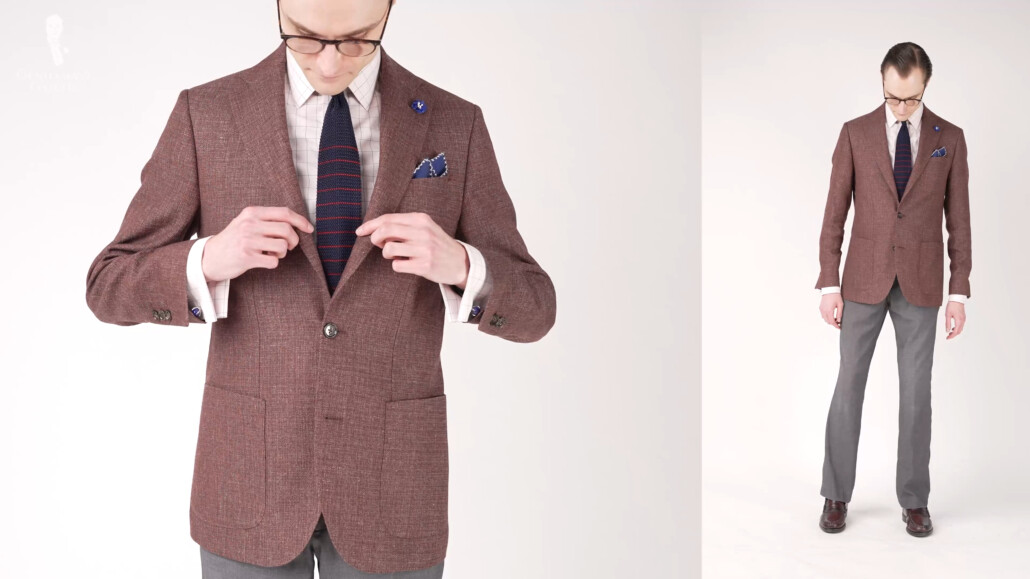
My trousers are in plain charcoal grey to ground the outfit and I’m wearing a pair of dark oxblood penny loafers from Allen Edmonds to, again, go with the reddish-brown color feel found in the jacket. I’ve matched my shoes to my belt using one of our Fort Belvedere modular belt system options and my belt buckle is in silver in the model we’re calling “The Jasper.” To go with the silver in my cufflinks, I’m also wearing a watch today. It’s a 70th Anniversary Limited Edition Omega Seamaster using a design originally dating to 1948. The watch was provided to us by Delray Watches. while the video is not sponsored. We will be partnering with them for more watch content in the future. So, stay tuned for that.
For all of the Fort Belvedere accessories I’m wearing in today’s video, you can take a look at the Fort Belvedere shop here.
